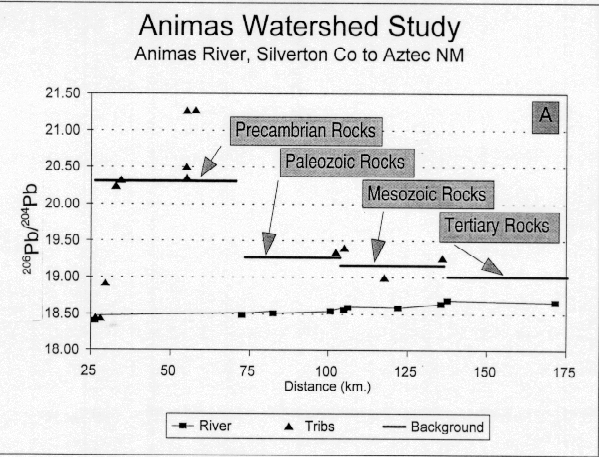Evidence of the sorbtion of copper and zinc to the colloids and the impact of this process on metal transport can be seen by normalizing the labile concentrations of copper, lead, and zinc in the bed sediments of the Animas River to those values measured for these metals at site A-72 below Silverton. The normalization procedure eliminates to problem of estimating dilution and transport losses of colloidal material as it moves downstream. Because lead is least likely to be affected by any process other than dilution (see fig. 32) and because we can measure the dilution effect as shown above using the lead-isotopic data (fig. 33 and table 4), gains in the total mass of copper and zinc by the colloids as a function of downstream distance can be demonstrated using these normalized data (fig. 34). The normalized lead data show the dilution curve of the colloidal component in the Animas River bed sediments caused by addition of materials by the tributaries draining the Animas River watershed downstream from Silverton. The copper curve plots slightly above the lead curve (fig. 34). Since there are no significant sources for copper other than the dissolved and suspended colloidal copper load described earlier, these gains in copper can be attributed to the aggregation and settling of the suspended colloidal material in the Animas Canyon reach. A much more dramatic change can be seen in the normalized zinc concentration data (fig. 34). Normalized zinc concentrations increase 50 percent below the Animas Canyon reach following an abrupt change in stream gradient (fig. 33C). When the dilution of the colloidal component is considered by examining the normalized lead data, the copper gain is about 30 percent and the zinc gain is almost 300 percent! Similar changes in the normalized zinc concentrations also were seen below Durnago where the stream gradient is low. We interpret these data to show the aggregation and settling of the colloidal component and its associated zinc loads to the bed sediments where they are stored until high-flow runoff.


